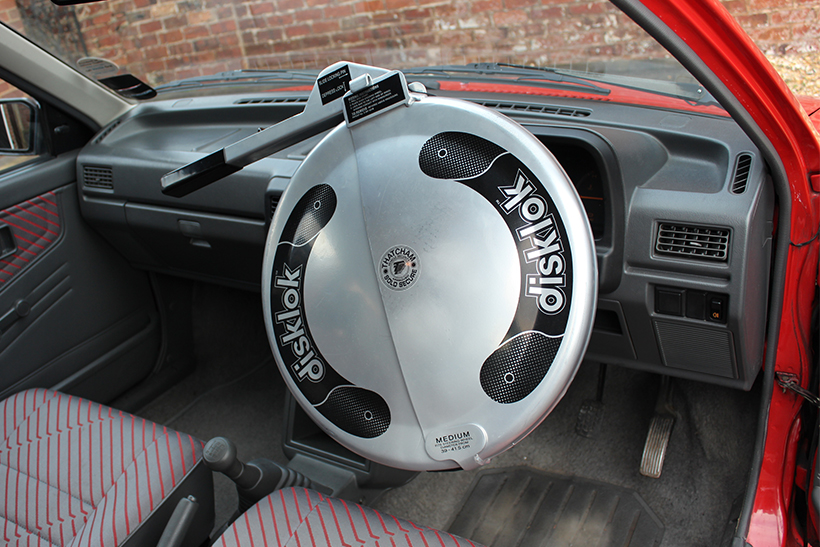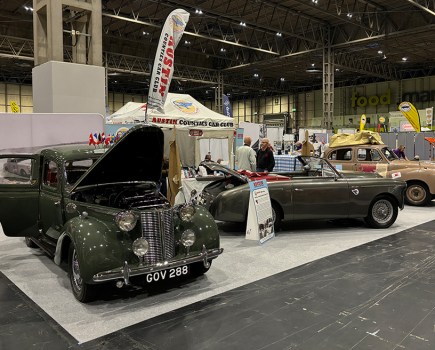Old school theft deterrents are still the best means of keeping your classic safe.
Renewed support for enclosed steering locks came from the classic car community after police noticed a rise in professional gangs targeting ‘keyless’ modern vehicles with starter buttons.
Last year, following a spate of modern vehicle thefts in Birmingham and the Black County, West Midlands Police’s crime reduction team told the BBC that Thatcham-approved steering locks (which cover the entire steering wheel) offered the best means of defence.
This plays neatly into the hands of classic vehicle enthusiasts, whose cars lack the sophisticated security systems tricked by the likes of relay boxes.
A relay box acts like a transmitter; held close to a target ‘keyless’ vehicle, it transmits and receives signals from the car’s fob, broadcasting all the time somewhere inside the victim’s house. The fob, thinking the relay box and the car are one and the same, transmits the signal to unlock and start the car, allowing thieves to drive away.
It’s one step on from the ‘hook and crook’ thefts of a few years ago; knowing people left keys near the door, robbers would push wires or hooks through letter boxes to hook keys off tables and racks.
Other practical methods include pedal and gearstick/handbrake locks – like steering locks, these take time to remove and make a lot of noise – undesirable to thieves, who want a car away as quickly as possible. Retaining the rotor arm whenever you’re parked is also an option, as it renders the ignition inoperative.
Police figures published in Autocar noted that car crime fell overall (from 318,000 in 2002 to 74,600 in the 12 months to September 2014; the Metropolitan Police also note the much-missed Land Rover Defender, which went out of production two years ago, is still popular with thieves in London and continues to be stolen to order.








